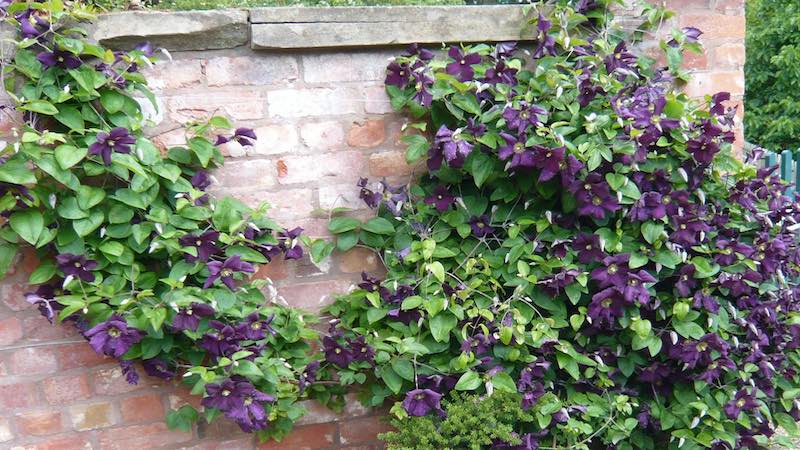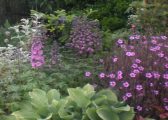Ticknall Garden Club attracted a good attendance on Tuesday, October 12th with an audience keen to hear all about plants that are suitable for putting by fences and garden walls. Janette Merilion was the speaker with all the answers. With many years experience in gardening and garden design, she was well qualified to do so. She had prepared a handout with a daunting list of plants suitable for the shelter of fences spanning all seasons of the year. It seemed unlikely that quite so many could work but, as long as ultimate width and height are taken into consideration for the chosen site, a host of plants can be used. The secret of success lies mainly in pruning side shoots back to 4 to 6 inches to train the growth.
Some smaller bushes turn out to be surprising climbers. Euonymus fortunei “Emerald and Gold” will flower and have lovely berries as it climbs upwards. Chaenomeles speciosa can be a shrub or climber. So can osmanthus burkwoodii which smells of chocolate as does akebia quinnata. Cytisus battandieri; the pineapple broom, and olearia x scilloniensis; the daisy bush, reward planting too.
Clematis of all types were mentioned but need appropriate pruning. Honeysuckle needs to be pruned back closely to create low growth. To get the best flowering wisteria needs its side shoots cut back in August and February but it needs to be a grafted specimen unless there will be a fifteen year wait for flowers!
There are some climbers however that cannot be tamed and look magnificent when left free to ramble. Fremontodendron californium, “Californian Glory” needs shelter and warm location. Campsis tagliabuana Mme Galen reaches 40 feet or more and the ever-popular fiery leaves of the Virginia Creeper always attract attention. The rose called Rambling Rector has a mass of white blooms and needs to be free to roam. Growing ivy on a house wall was not advised as it will always find any weakness in mortar, but it was highly praised for any other location as food for birds and bees and nesting. Pyracantha and cotoneaster were also recommended for wildlife and reliability of growth.
Nor should planting fruit trees be neglected as they can be pruned into a vast array of espalier designs.
The Speaker had provided a wealth of information alongside beautiful photographs. Enough to give the audience inspiration to go home and review their own planting.





